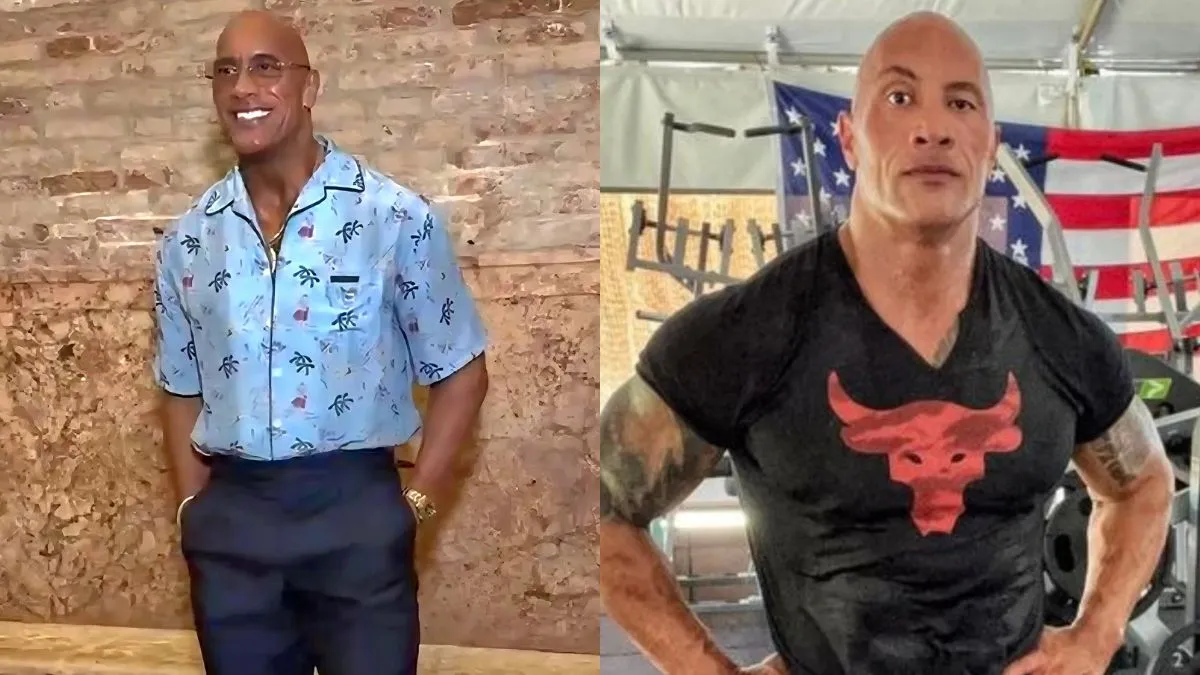
Dwayne “The Rock” Johnson has long been synonymous with power, muscle, and Hollywood action hero bravado. But in 2025, the world witnessed a transformation that stunned fans, critics, and even longtime followers of his career. Gone was the hulking mass of muscle that defined his roles in Fast & Furious, Jumanji, and Black Adam. In its place stood a leaner, more introspective figure—still imposing, but radically different. This wasn’t just a physical shift; it was a reinvention of identity, purpose, and artistic ambition.
The catalyst for this transformation was Johnson’s upcoming film The Smashing Machine, a biopic directed by Benny Safdie, in which he portrays real-life MMA legend Mark Kerr. The role demanded not just acting chops but a complete overhaul of Johnson’s physique and mindset. Kerr’s story is one of triumph and tragedy—an elite fighter battling addiction, emotional trauma, and the brutal toll of professional combat. To honor that complexity, Johnson knew he had to shed more than just weight. He had to shed the persona of “The Rock.”
A Transformation Born of Purpose
Johnson’s metamorphosis wasn’t driven by vanity or trend. It was rooted in authenticity. To embody Kerr, he dropped over 25 kilograms—nearly 60 pounds—through a disciplined regimen of diet, cardio, and functional training. The goal wasn’t to look shredded or camera-ready in the traditional sense. It was to look real. Kerr wasn’t a superhero; he was a man broken and rebuilt by the sport he loved. Johnson’s new physique reflects that vulnerability.
At the Venice Film Festival, where The Smashing Machine premiered to a 15-minute standing ovation, Johnson appeared nearly unrecognizable. Dressed in a tailored blue shirt and black trousers, he showcased a frame that was lean, wiry, and emotionally resonant. Fans on social media were quick to react, with some jokingly dubbing him “The Pebble.” But beneath the humor was genuine admiration. At 53, Johnson had pulled off one of the most dramatic and meaningful transformations of his career.
The Emotional Weight Behind the Physical Shift
In interviews, Johnson spoke candidly about the emotional journey that accompanied his physical transformation. “This was something I was hungry to do,” he said. “I’ve made big movies, fun movies, and I’m proud of them. But there was a voice inside me that kept asking, ‘What if I could do more?’” That voice led him to Kerr’s story—a tale not just of fighting, but of love, loss, and redemption.
Johnson revealed that portraying Kerr required him to confront his own vulnerabilities. “Mark OD’d twice. He’s lucky to be alive. This film isn’t just about fighting—it’s a love story. A love story between Mark and his wife, and between Mark and the sport that nearly destroyed him.” To channel that depth, Johnson immersed himself in Kerr’s world, studying his movements, speech patterns, and emotional triggers. The transformation wasn’t just physical—it was psychological.
Shedding the Superhero Armor
For years, Johnson’s brand has been built on strength. From his WWE days to his blockbuster roles, he’s been the embodiment of physical dominance. But that image came with expectations—of size, of invincibility, of never showing weakness. With The Smashing Machine, Johnson chose to dismantle that armor.
The decision to slim down wasn’t without controversy. Online speculation swirled, with some attributing the change to weight-loss drugs or health concerns. Johnson addressed these rumors with grace, emphasizing that the transformation was the result of intentional lifestyle changes and a desire to live longer, healthier, and more authentically. “Staying that big takes a toll,” he admitted. “I wanted to do this the right way—for the role, and for myself.”
The Role of Emily Blunt and Creative Collaboration
Johnson credited his co-star Emily Blunt, who plays Kerr’s wife Dawn Staples, as a key source of support during the transformation. “She’s my best friend, and she was there every step of the way,” he said. Their on-screen chemistry is expected to be one of the film’s emotional anchors, with Blunt bringing nuance and strength to a character caught between love and survival.
Director Benny Safdie, known for his gritty realism in films like Uncut Gems, pushed Johnson to explore new depths. The collaboration was intense, with Johnson spending hours in makeup to apply prosthetics and transform into Kerr. “By the time I got to set, I was Mark Kerr,” he said. “From how he walked to how he talked—I felt it.”
A New Chapter in Johnson’s Career
The Smashing Machine represents a turning point for Johnson. It’s a departure from spectacle-driven cinema and a move toward character-driven storytelling. The film’s reception at Venice suggests that audiences are ready to see a different side of him—one that’s raw, vulnerable, and deeply human.
Critics have praised Johnson’s commitment, noting that the transformation adds layers of authenticity to the performance. It’s not just about looking the part—it’s about feeling it. And Johnson, through sheer will and artistic integrity, has achieved that.
The Broader Impact
Johnson’s transformation has sparked conversations beyond Hollywood. Fitness experts, mental health advocates, and fans have weighed in on the significance of shedding muscle mass for health and longevity. In an industry obsessed with youth and perfection, Johnson’s choice to prioritize realism and emotional truth is refreshing.
It also challenges stereotypes about masculinity and aging. At 53, Johnson is proving that reinvention is possible—not just for actors, but for anyone willing to confront their limits and redefine their goals.
Conclusion: The Rock, Reimagined
Dwayne Johnson’s stunning physical transformation for The Smashing Machine is more than a headline—it’s a statement. It’s a testament to the power of purpose, the courage to evolve, and the artistry that lies beneath the surface. By stepping away from the image of “The Rock” and stepping into the shoes of Mark Kerr, Johnson has redefined what it means to be a leading man.
This isn’t the end of his action hero era—it’s the beginning of something deeper. A chapter where strength is measured not in muscle, but in vulnerability. Where transformation isn’t just about appearance, but about meaning. And where The Rock, now reimagined, continues to inspire in ways we never expected.


Leave a Reply